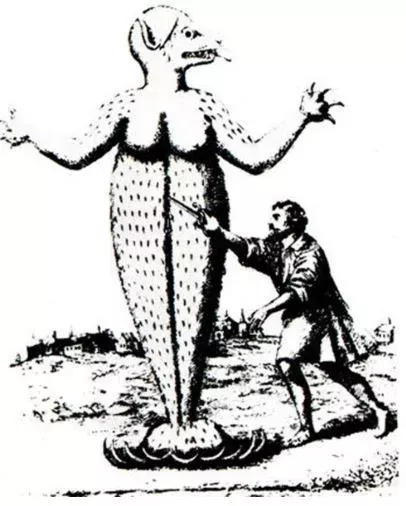Results: Merfolk Myths and Legends from Around the World. Part 1 of 3.
Published on 03/24/2025
In most folklore, Merfolk are not anything like the cheery, benevolent but sassy sweetheart Ariel, as depicted in The Little Mermaid, but rather malevolent monsters that lure people to their deaths. Fodors Travel is my source for this series. (Right click or tap and hold to view image in a new tab.)

QUESTIONS
GO to COMMENTS
Comments
1.
1.
Kappa are aquatic, reptilian humanoids who inhabit the rivers and streams flowing over Japan. Clumsy on land, they are at home in the water, and thrive during the warm months. Kappa are generally the size and shape of a human child, yet despite their small stature they are physically stronger than a grown man. Their bodies are built for swimming; they have webbed, thumbless hands and feet, a turtle-like beak and shell, and an elastic, waterproof skin that reeks of fish and is said to be removable. Other inhuman traits include three rectums that allow them to pass three times as much gas as humans, and forearms attached to one another inside of their shells—pulling on one arm lengthens it while the other arm contracts. But their most distinguishing characteristic is a dish-like depression that lies on top of their skulls. This dish is the source of a Kappa's power and must be kept filled with water at all times. Should the water be spilled and the dish dry up, the Kappa will be unable to move. It may even die. Possessed of a keen intelligence, Kappa are one of the few yōkai (supernatural entities and spirits in Japanese folklore) able to learn human languages. They are highly knowledgeable about medicine and the art of setting bones. According to legend, friendly Kappa taught these skills to humans. Have you ever had a broken bone?
Yes
43%
964 votes
No
57%
1285 votes
2.
2.
The Ipupiara was a creature from the mythology of the Tupi people, who lived along the coast of Brazil in the 16th century, until systematic colonization ravaged the country. The Ipupiara, or sea-man was believed to attack and kill humans living on land by pulling them under water and hugging them to death, where they would then eat very specific and small parts of their body; eyes, fingers, noses and genitals. There are reports from 1564 that one of the creatures was actually captured and killed by a Portuguese commander who stabbed it in the midriff. The river creature was described as over 15 feet long, hair covering the body and long bristles around the mouth. Would you swim in a body of water that supposedly has this creature in it?

Yes
8%
181 votes
No
62%
1396 votes
I can't/don't swim.
19%
426 votes
Umm... Am I carrying a harpoon with me?
11%
246 votes
3.
3.
The malevolent and murderous Vodyanoi, from voda or "water", is a Slavic water spirit or goblin. It frequents lakes, ponds, rivers, and other bodies of water, but it especially prefers mill-ponds. A Vodyanoi varies wildly in appearance. It can look roughly human, with big paws, horns, tail, and eyes like burning coals. It can also be half fish and half human, or appear as a huge moss-covered fish, a swan, or even a bouquet of red flowers on the water! In Smolensk the Vodyanoi is humpbacked and has the feet and tail of a cow, while in Vologda it is a log with little wings flying over the water. However, it's usually depicted as a green-skinned humanoid figure wearing colorful clothes and a hat, smoking a pipe and sitting near the water. A Vodyanoi out of the water and in human guise can be identified by the water oozing out of its coat. A Vodyanoi sees mill-dams as an insult, and will destroy them to keep the water flowing. Have you ever seen a dam, in person?
Yes
49%
1098 votes
No
38%
858 votes
I want to.
4%
80 votes
Closest I've gotten is in TV shows/movies.
9%
213 votes
4.
4.
These Norse shape-shifting sea creatures of Orkney folklore, are a mysterious, amphibious race of sorcerous shapeshifters from the sea, often depicted as having a dour and sinister character. The Finfolk (both Finman and Finwife) kidnap unsuspecting fishermen, or frolicking youth, near the shore and force them into lifelong servitude as a spouse. The Finfolk are said to be from Finfolkaheem, a magical city under the sea, and they regularly journey from the depths of the ocean to the Orkney Islands. The Orkney Islands, a Scottish archipelago, have a significant Norse history, with Norse people settling the islands in the late 8th century, establishing an Earldom of Orkney that remained part of a Scandinavian kingdom until 1468. Have you ever been to Scotland?
Yes
11%
248 votes
No
74%
1665 votes
Now... Where'd I put that bucket list???
5%
119 votes
I was actually born there!
1%
29 votes
I don't travel.
8%
188 votes
COMMENTS


